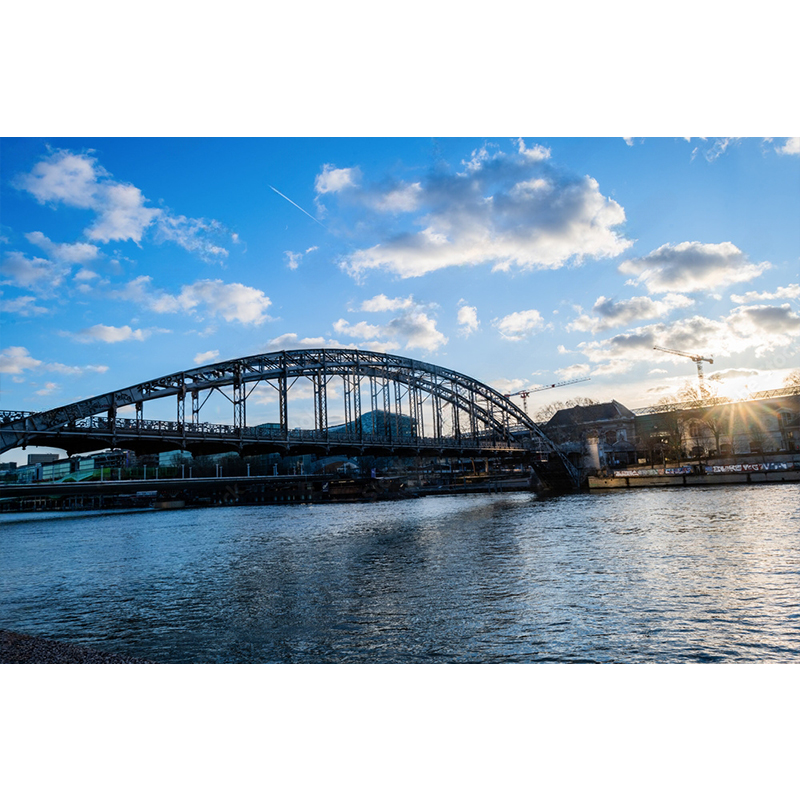Box Girder vs. Truss vs. I-Beam Bridges: Which Steel Bridge Design is Right for Your Project?

Choosing the right bridge design is one of the most critical decisions in any infrastructure project.
From span length to load capacity, site constraints to cost considerations, the structural form you select will directly impact construction timelines, maintenance needs, and lifecycle performance.
In this detailed comparison, we’ll explore three common steel bridge types — box girder, truss, and I-beam — and help you determine which is best suited for your application.
Overview of Each Bridge Type
1. Steel Box Girder Bridges
A box girder bridge uses hollow steel girders, often rectangular or trapezoidal in shape, formed by welding together steel plates.
The result is a high-torsion-resistance section ideal for curved, skewed, or high-load bridge designs.
Typical Use Cases:
Urban flyovers
Coastal highway bridges
Industrial zone crossings
2. Steel Truss Bridges
Truss bridges use a triangulated framework made of connected steel elements (compression and tension members) to distribute loads.
They’re visually open, strong, and efficient over long spans.
Typical Use Cases:
Railway bridges
Long-span highway crossings
River and canyon crossings
3. Steel I-Beam (Girder) Bridges
These are constructed using simple I-shaped girders placed in parallel.
The deck rests on top or is integrated into the I-beams.
They’re straightforward, cost-effective, and widely used.
Typical Use Cases:
Local road overpasses
Short-span urban bridges
Pedestrian or bike bridges
Key Comparison Factors
1. Torsional Rigidity
Box Girder: Excellent. Ideal for curved alignments and asymmetric loading.
Truss: Good. Loads are triangulated but can require bracing.
I-Beam: Poor. Not suitable for curved spans; prone to twisting.
2. Structural Depth & Clearance
Box Girder: Shallow depth, suitable for low-clearance needs.
Truss: Deep trusses can obstruct sightlines and aesthetics.
I-Beam: Medium depth. Simple appearance but limited span efficiency.
3. Aesthetics
Box Girder: Clean, modern, and minimal profile.
Truss: Traditional or industrial appearance; sometimes visually bulky.
I-Beam: Neutral appearance; minimal architectural impact.
4. Span Length Capacity
Box Girder: Up to 150m without intermediate piers.
Truss: Can exceed 300m with optimized design.
I-Beam: Limited to 40–50m economically.
5. Fabrication & Construction Speed
Box Girder: High — factory prefabrication and modular assembly.
Truss: Moderate — on-site assembly of many members.
I-Beam: Very high — standard profiles and minimal welding.
6. Maintenance Requirements
Box Girder: Low. Fewer exposed joints and less corrosion risk.
Truss: High. Numerous nodes and connections to inspect.
I-Beam: Moderate. Depends on coating and drainage design.
7. Cost Considerations
Box Girder: Higher initial cost, lower lifecycle cost.
Truss: Medium to high cost depending on span and complexity.
I-Beam: Low upfront cost but may need more frequent replacement.
Project Suitability Chart
| Project Type | Best Choice |
|---|---|
| Urban Overpass (Curved) | Steel Box Girder |
| Long-Span River Crossing | Steel Truss |
| Short Industrial Site Access | Steel I-Beam |
| Seismic or Wind-Prone Zone | Steel Box Girder |
| Railway Bridge with Heavy Loads | Steel Truss |
| Temporary/Portable Bridge | Steel I-Beam or Truss |
Case Study: Hybrid Design in a Coastal Highway Project
In 2023, WZH Build was tasked with designing a 120m highway bridge with a curved alignment along a coastal region in Chile.
Engineers initially considered a truss design but opted for a modular steel box girder structure due to its torsional stability, clean profile, and reduced maintenance in the saline environment.
The bridge was erected in 21 days using four prefabricated sections.
Summary: Which Bridge Type Should You Choose?
| Factor | Best Bridge Type |
| Fast Installation | Steel Box Girder |
| Longest Spans | Steel Truss |
| Lowest Initial Cost | Steel I-Beam |
| Best for Curved Layout | Steel Box Girder |
| Simplest Construction | Steel I-Beam |
| Lowest Maintenance | Steel Box Girder |
Each project has unique parameters. In general:
Choose box girder for high torsion needs, fast builds, or curved designs.
Choose truss for ultra-long spans or rail traffic.
Choose I-beam for local, short-span, budget-limited projects.





